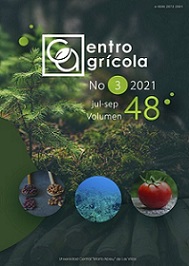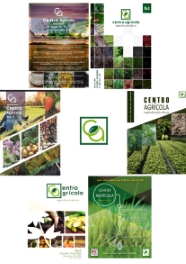CE:4816 CF: cag093172138
RESEARCH ARTICLE
Application of earthworm humus and Bradyrhizobium japonicum in Glycine max (L.) Merrill
Aplicación sola y combinada de humus de lombriz con Bradyrhizobium japonicum en Glycine max (L.) Merrill.
Ricardo Gómez Machado, Marta Travieso Torres, Luis Antonio Tamayo López, Yoannia Gretel Pupo Blanco
Universidad de Granma, Carretera a Manzanillo km 17 ½, Peralejo, Bayamo, Granma, Cuba. CP 85100
E-mail:This email address is being protected from spambots. You need JavaScript enabled to view it.
ABSTRACT
The experiment was developed in the Granma University's productive area, with the objective of evaluating the alone and combined earthworm humus application effect with Bradyrhizobium japonicum on G7R-315 variety soybean cultivation. Six treatments were evaluated: T1 Control, T2 B. japonicum, T3 earthworm humus (6 t ha-1), T4 B. japonicum + earthworm humus (6 t ha-1), T5 earthworm humus (8 t ha-1), T6 B. japonicum + earthworm humus (8 t ha-1) on a brown soil. A randomized block design was used with three replicas. The evaluated variables were: number per plant leguminous; weigh from 100 seeds and agricultural yield. The data obtained were processed by double classification variance analysis, applied a Turkey's multivariate statistical analysis. It was found that treatments that included the earthworm humus, the evaluated variables shown superior significantly results and it differed of the control treatment and to the aloneB. japonicum application.





